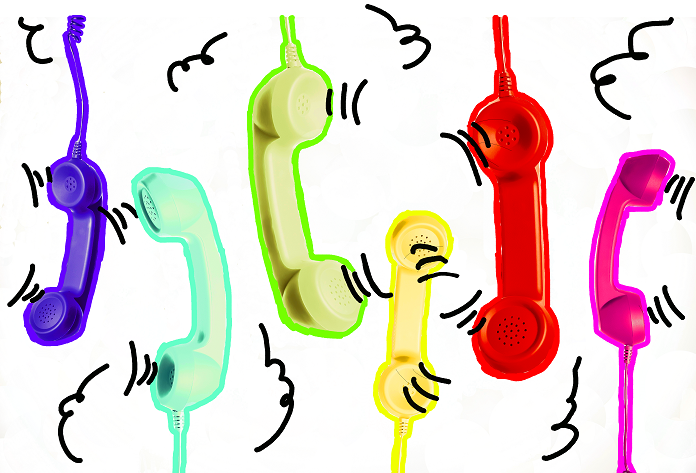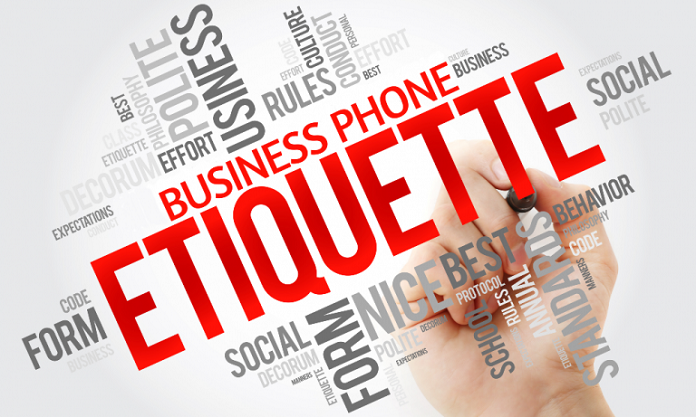Phone etiquette is the way you showcase your manners to others while representing either yourself or your business to others during a telephone conversation. In general, it considers the tone of your voice, choice of words and your active listening skills.
Most of the calls a majority of us will receive throughout our lifetime will be informal calls from friends and family. There are no established rules for answering them other than the nature of our relationship with them. The story is different for workplace calls, especially when it comes to professional settings. When rendering customer service, the right phone etiquette can make the difference between turning a profit or a loss.
As much as 42% of consumers will abandon a brand for another over poor customer service, and more than 73% will connect and stay loyal to a brand if it has friendly customer service. Simply put, having a customer service team with proper phone etiquette is as integral to your success as your product. Here, we have tackled everything you need to know to get your customer service firing on all cylinders.
What is Cell Phone Etiquette?
It is the way and manner to represent oneself and, in this case, your business to customers via telephone communication. A telephone conversation etiquette covers various subtexts like how you greet the customer, tone of voice, choice of words, body language, listening skills, and how you end the call.
Despite the seemingly simple idea, it is a major part of how the world sees you and your business. Displaying proper telephone conversation etiquette reveals a high level of professionalism. It also helps you improve and solidify customer trust, along with achieving high levels of satisfaction.
The Anatomy of a Proper Customer Service Phone Etiquette in the Workplace

Earlier, we mentioned the subtexts that inform a phone conversation etiquette. These subtexts often play out over an entire call, starting from the moment the phone rings to the conversation itself and the end of it. Standardizing the application of these factors is essential to build uniformity and consistency among staff members.
One way to do that is to develop a routine. Having a routine that plays out the different sections of a call helps make phone etiquette second nature to you and your staff. You can do this by creating a set of rules to be learned and followed in each call you make or take.
These rules differ for each company. However, underneath the infusion of creativity and uniqueness are universal principles guiding customer interaction, and it all starts from the moment you pick up the phone.
What to Say To Initiate A Good Business Phone Etiquette
Customer service phone calls can go in two directions. You can either be making the call or be at the receiving end. As such, what you say at the beginning depends on your position. If you are making the call, start by offering friendly greetings, introduce yourself, and ask how they are. Here is an example:
“Good morning, [receiver’s name]! This is [your name] from XYZ Company. How are you?”
If you are not sure of their name, you can start by saying, “Good morning! This is [your name] from XYZ Company. Am I on to [what their name might be]?”
Once you have established your identity, you should do two things. If it is not a scheduled call, first ask if it is a good time to talk. Secondly, inform them why you are calling. For example, if you call randomly, say something like “Can I continue” or “Is it a good time to talk.”
If their answer is in the affirmative, you should proceed to inform them why you are calling by saying any of the following:
- The reason I’m calling is…
- I’m calling to…
- I’m calling about…
If they make the call, you should state your organization’s name, your name, friendly greetings, and offer help. An example is “Welcome to XYZ Company. [Your name] speaking, Good afternoon, how may I help you?”
Perhaps your phone system allows you to know who is calling. Then you can start the business call by saying, “Hi [their name]! Welcome to XYZ Company! What can I do for you?”
How To Maintain A Good Cell Phone Etiquette During A Conversation
Once you have cleared the first hurdle and established a rapport with the customer, it is time to get into the substance of the call. Whether they made the call or you did, there are a few phone etiquette principles to observe during a customer service call.
- Speak clearly
With your voice being the only form of communication, you must be as clear as a summer sky when speaking with a customer. It not only allows the customer to form a favorable opinion of you and your company, but it also prevents any miscommunication that might arise from a lack of clarity. Best advice? Be concise and direct.
- Be sensitive about the tone of your voice
The tone of your voice must be even throughout the call. Do not be pushy, aggressive, or anxious. You must maintain a tone that conveys confidence and authority to build trust with the customer. A popular piece of advice is to sit up in the chair or stand up while you are on the phone. This is because a relaxed posture often makes you sound less than a professional.
- Plan before placing a call
If you are making a customer service call, ensure you have all the needed facts and conversation points written down or in an easily accessible place. You will come across as incompetent if you repeatedly keep offering zero answers during the conversation. So, make sure your knowledge bank is full of facts relevant to the conversation.
- Ask before placing them on hold
You won’t always have the required information readily available. When you need to ask or search for more, ask to place the customer on hold. Also, let them know you are doing so to assist them better. It displays professional courtesy and shows you value their time.
How to End the Phone Conversation Professionally
Proper phone etiquette for customer service professionals is no good unless it covers the end of the conversation. This is because how you end a call is just as important as how you start one. You need to do about four things to leave a good impression when ending a professional phone conversation.
- Confirm the Key Points – the end of the conversation gives you a chance to summarize what you have just discussed. Reconfirm the facts and details with the customer to ensure you are both on the same page. Here is an example: “So, Mr. [their name], you want us to ….and send you an email by… Do I have that right? Good. Is there anything I’ve left out? Can I assist you with anything else?”
- Express Appreciation – say thank you to the customer for a successful conversation. If they made the call, you could say something like, “Thank you for calling XYZ Company, we hope we have cleared up any issues you might have.” If you made the call, you could say, “Thank you for taking the time to discuss with me, Mr/Miss [their name]”
- Be Positive – whatever you do, always end the call on a positive note. An easy way to do this is by adding a personal comment just before saying goodbye. You can use any comment from ‘Have a nice weekend’ to ‘Have a great day.’ You can also use any personalized comment based on whatever information you’ve gained from the conversation. So, if they said they were at a game, you could end by saying, ‘Enjoy your football game.’
- Say Goodbye – once you have exchanged final pleasantries, it is time to say goodbye. A simple line like “Alright. Nice talking to you. Goodbye!” works. However, once you have said your goodbye, wait for the customer to hang up. Avoid hanging up first to prevent accidentally ending the call before the customer is ready to.
Dos and Don’ts in Telephone Conversation

Now that you know the basic anatomy and tips for proper telephone etiquette for excellent customer service, there are a few Dos and Don’ts you should know. These rules are there to keep your phone conversations professional and leave the customer satisfied.
Dos of Customer Service Phone Etiquette
Whatever policy decisions you make for your customer service department, make sure you always do these things.
- Use proper language
Casual language is fit for conversations with friends and family, not in professional settings. Avoid using swear words and slang. Stick to calm, peaceful language, regardless of the actions of the customer.
- Listen actively and take notes
When you are on the phone with a customer or client, it is not the time to be distracted. Maintain 100% focus on the conversation and record any relevant point or information. Repeatedly asking the customer to repeat themselves does not depict a good look on you or the company.
- Stay positive and cheerful
People have favorable opinions about things that make them feel better about themselves. There will be days your customer is having a gloomy day. On those days, being the source of positivity and cheer in their day can leave a good impression. Use your voice to relay joy and friendliness, and you will turn casual customers into loyal clients.
- Be honest
Most people can smell lies from a distance. Even if your answer might be unpleasant, always stay honest. Deliver the truth in a polite and considerate manner. If you stick to this, a customer can still get a positive experience even if you can’t meet their needs.
Don’ts of Customer Service Phone Etiquette
Avoid doing any of these things at any cost. To do them is to project a negative image of yourself and the company to the customer or client.
- Do not interrupt customers
This is where active listening can be beneficial. Always allow your customers to finish their thoughts before responding. Resist any urge to cut them off during the conversation, even if their story has no relevance to the complaints. Understand that letting them speak can be cathartic and leave them with a positive opinion of you.
- Never let the phone ring more than three times
Three rings are the sweet spot to picking up a customer call. It gives you enough time to center yourself for the call, and you do not leave the customer waiting for too long. Stick to the three rings rule of customer service phone etiquette, and your conversation is off to a good start.
- Don’t use the speakerphone
Maybe the customer is telling the most interesting tale, and you want fellow staff to join in. Perhaps you want to multitask. Whatever the reason, do not put the customer on speakerphone. You have no way to filter outside noise, and there is a good chance the customer could hear themselves in the speaker. Ultimately, it suggests you are not paying attention, which is not the quality of proper phone etiquette.
- You can’t allow side attractions during conversations
Your attention should be wholly focused on the customer. Avoid any distractions or side conversations while you are on the phone. A good way to ensure this is to invest in noise-canceling headsets. Whatever solution you opt for, always ensure you have a quiet and serene environment when taking a customer’s call.
That is it. You now have all you need to maintain a high-level phone etiquette for customer service. Follow these rules, and your professional calls will stay consistently top-notch and help you build a loyal customer base.
